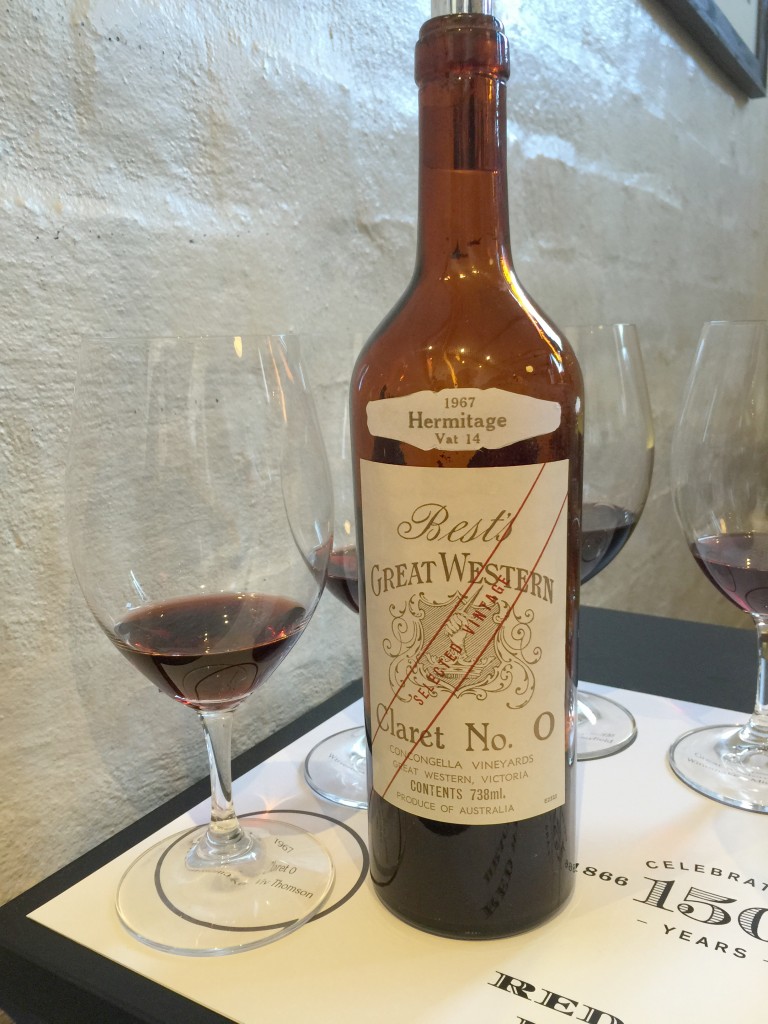Mount Tumbarumba On the Fly Pinot Noir 2013 (wine of the week)
Mt Tumbarumba vineyard, Tumbarumba, NSW
$25
In the early 90s Richard Cottam and Elvie Yates planted chardonnay and pinot noir vines on Cottam family land in Tumbarumba. Though working full time in Canberra, they managed the vineyard and found buyers for the fruit over the next few decades. But as a Sunday night meal in the Tumbarumba Pub revealed, they recently created their own label – and had the very good sense to choose Canberra’s Alex McKay as winemaker. The barmaid obliged our request for a local pinot, and even the world’s biggest T-bone couldn’t distract from its delicate beauty. McKay’s winemaking captured the aromas and flavours of the lovely fruit. But it also contributed texture, tannin structure and delicious stemmy, savoury notes that held our interest to the last drop. See mounttumbarumba.com.au for stockists.
Wily Trout Shiraz 2014
Wily Trout vineyard, Spring Range, Canberra District, NSW
$30
The born-again Wily Trout wines reveal the enthusiasm of second generation grape grower Will Bruce, son of founder, Robert Bruce. Just as his father did, Will manages the vineyard, but takes a more hands-on approach to the wines, which are made under his supervision at Eden Road, Murrumbateman. This silver medal winner from the Canberra Regional Show has the medium colour and body typical of Canberra shiraz. Bright, fresh, ripe-berry fruit flavour, with a spicy note, and soft, fine tannins provide really appealing current drinking.
Wily Trout Chardonnay 2014
Wily Trout vineyard, Spring Range, Canberra District, NSW
$25
Canberra makes decent chardonnay but, with occasional exceptions such as Lark Hill, long ago surrendered the high ground to cooler districts. Indeed, several Canberra makers acknowledge this by sourcing chardonnay from higher, cooler, Tumbarumba. Wily Trout continues with the variety, making an oak-fermented version. The wine offers ripe, stone-fruit-like varietal flavours on a soft and slightly spicy palate, with a touch of oak flavour apparent in the finish.
McKellar Ridge Pinot Noir 2014
Pankhurst and Quarry Hill vineyards, Canberra District, NSW and ACT
$28–$30
Pinot noir’s growing popularity in Australia rests mainly on the cool Australian and New Zealand regions making the cutting edge stuff and, in the volume market, on Marlborough New Zealand. Canberra winemakers love the variety, too. Some grow it locally, while others prefer to bring grapes in from cooler Tumbarumba to our south. Brian and Janet Johnston’s version comes from the Pankhurst vineyard, Hall, and Quarry Hill, Murrumbateman. The wine offers ripe varietal aromas and flavours on a medium-bodied palate, with drink-now soft tannins and smooth texture.
Oakridge 864 Single Block Pinot Noir 2014
B-block, Lusatia Park vineyard, Yarra Valley, Victoria
$78
Most leading pinot noir makers include greater or lesser amounts of whole bunches in their ferments, thus bringing stems into the picture. Stems provide tannins, which can add to a wine’s silky texture (provided they’re ripe), and introduce subtle stalky aromas and flavours that add complexity to the basic grape character. In 864, winemaker David Bicknell opts to sort bunches for quality, then de-stem them to open fermenters where fermentation begins inside the whole berries. The result is a multi-dimensional pinot, with intense, pure varietal flavours at its heart, but complemented by deeper savoury character. Quite strong though fine tannins give grip and smooth texture to a complete, highly individual pinot noir.
West Cape Howe Riesling 2015
Block 6, Langton vineyard, Mount Barker, Western Australia
$15–$20
Time and again riesling proves its appeal and value to wine drinkers. In this Western Australian version, made by Gavin Berry, we find instant gratification in juicy, slurpy citrus-like varietal flavours. A lemony, acid tang completes this beautifully refreshing, fine, dry white. Berry attributes the wine’s intense flavour and finesse to high-quality grapes, careful juice extraction and a cool, protective fermentation – all aimed at fruit preservation. Riesling of this calibre drinks well from release through another five or six years of bottle age.
Copyright © Chris Shanahan 2016
First published 11 May 2016 in the Canberra Times

